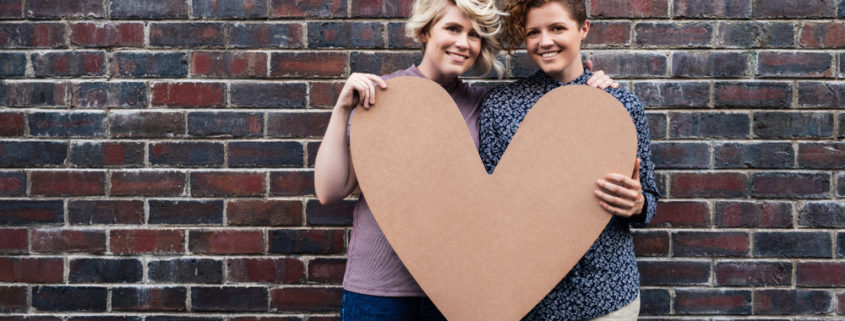
Improving inclusiveness for same gender attracted women
Improving inclusiveness for same gender attracted women
Same-gender attracted women are increasingly comfortable being out at work but the impact of stereotypes like “aggressive” and “man-hater” persists, along with a common belief that being a same-gender attracted woman inhibits career progression, according to research by PwC and Pride in Diversity.
The Where are all the Women survey of same-gender attracted Australian women on experiences of workplace inclusion revealed two-thirds are comfortable being out to most or all of the people they work with, with only a third of respondents remaining in the closet.
Despite this, the survey, which was one of the largest of its kind ever conducted, shows 29 per cent of respondents believe being same-gender attracted inhibits their ability to progress their career, and one in five have left a workplace before the age of 26 due to a lack of inclusion.
Survey respondents said “masculine”, “butch”, “man-hater” and “aggressive” were the most common stereotypes for a same-gender attracted woman, with three-quarters indicating these stereotypes negatively impacted them at work and were the biggest barrier to being out.
PwC manager and lead researcher Kate Marks said they undertook the survey to understand why same-gender attracted women are not very visible in Australian workplaces and how workplaces might start to address this.
“Many respondents reference the negative impact of derogatory talk, casual homophobic jokes and inappropriate questions in their local teams.
They also reference how inclusive behaviours of managers and colleagues created psychological safety, as did symbols like rainbow lanyards and inclusion ally stickers around the office.
Australian organisations are increasingly embracing workplace diversity and working hard to set the tone from the top and build an inclusive macro culture. Our survey shows we need to do more to engage same-gender attracted women and focus on watercooler conversations to change workplace culture at a micro level,” she said.
Pride in Diversity Program Manager Sarah McCarthy said there were five key areas workplaces should focus on to improve the participation and sense of belonging and connection of same-gender attracted women at work.
“The first is changing culture at a micro level; followed by the intersectionality of gender and sexuality and the unique challenges this presents.
“Other areas to focus on are the perceived stereotype; the visibility of diverse same-gender attracted women role models; and finally, enabling LGBTI networks to appeal to and support same-sex attracted women.”
Ms McCarthy said that by addressing these areas, workplaces can help drive belonging, connection and confidence for same-gender attracted women at work and to help organisations make this change, the researchers have developed a four-stage model that organisations can follow to support same-sex attracted women at work.
The research revealed significant differences between Australia’s States and Territories, with same-gender attracted women in New South Wales and South Australia most likely to be out, with respective rates of 70 per cent and 79 per cent. Western Australia had the lowest level of comfort, with just 50 percent of respondents saying they were out at work.
Same-gender attracted women working in the private sector were more likely to be out at work than those in the public sector (67 per cent compared to 59 per cent). In addition, they were less likely to be out if English was their second language (54 per cent compared to 66 per cent).
Other findings from the research showed:
- Younger same-gender attracted women are less likely to come out immediately after joining a workplace (53 per cent are comfortable being out in their first year);
- The more senior a woman and the smaller the workplace, the greater their level of comfort with being out at work (60 per cent for women in organisations with 5000+ employees to 72 per cent for women with less than 100 employees in their organisation);
- Women without a partner are 21 per cent less likely to be out (50 per cent compared to 71 per cent);
- 70 per cent of women believe it is important to be out at work, with a high correlation between likelihood to be out and belief in the importance of being out;
- 79 per cent believe both gender and sexual equality equally impacted on their career progression, supporting existing research on the double-glazed glass ceiling;
- More than half of respondents believe being judged about their sexuality is a risk to them being out at work.
- 81 per cent believe active leadership support impacts how they felt about being out at work and 80 per cent indicate visible support of LGBTI inclusion was important when looking for a new job.
- 84 per cent have role models outside of work, but only around half have role models in the workplace.





